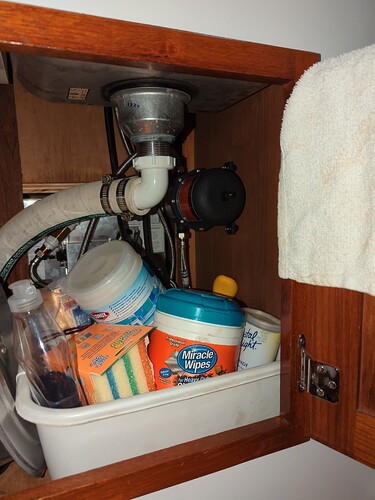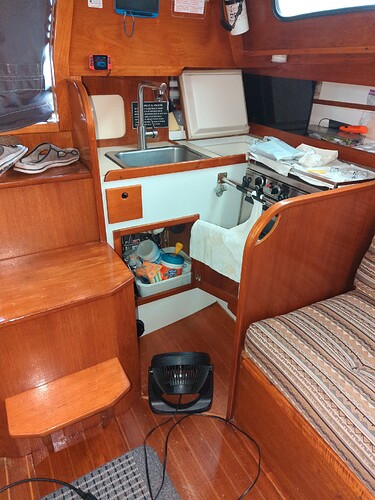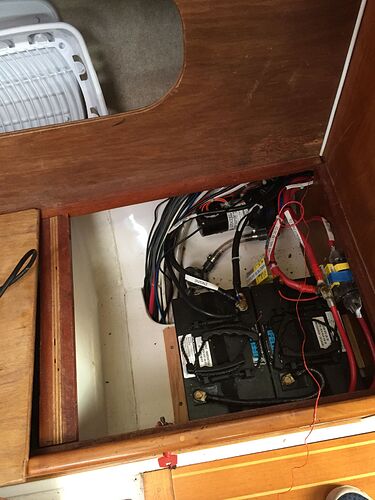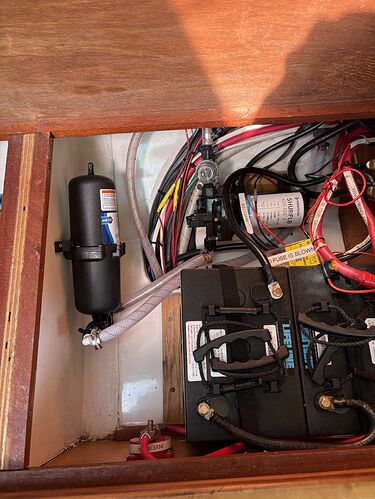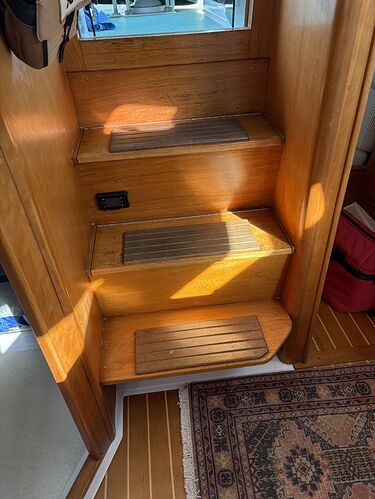Just for the record and future reference.
I developed a leak in my 4 gallon water heater (110 VAC + coolant circuit) and decided to replace with a 6 gallon Kuma heater purchased via Amazon.
After replacement and some carpentry to accommodate the slightly larger heater, I noted two issues
First, I was getting hot water from the cold water tap for several seconds before it went cold. Bad because when the water is hot it is very hot, esp from the coolant loop.
Second I was getting fairly substantial pulsing of the cold water feed due to rapid pump on off action.
The first issue turned out to be the fact hot water expands and results in pushing hot water back into the cold water feed line this is close enough to my galley faucet feed to result in the initial hot water output of the cold faucet setting.
Hot in cold Solution : installed a check valve in the cold water feed to the new tank. Cold can go in but hot can’t come back…problem solved. No idea why the old tank did not present this problem, maybe an internal check valve?? anyway, the check valve was the key.
Pulsing solution: Purchased a small resin accumulator tank on Amazon (designed for boats/RVs). Installed this just before cold water feed to water heater. Pressurized it and initially still had pulsing. Started to gradually release pressure in accumulator until I saw pulsing drop to zero. Worked like a charm.
Others on the forum have mentioned use of an accumulator to address this problem. They were completely correct as I can attest.
With regard to the Kuma heater there is also a procedure to periodically refresh the air bubble which lives at the top of the HW tank. This bubble is there to accommodate water expansion when the heater heats up. It has to be refreshed every six to twelve months (water absorbs the air over time). If one does not do this procedure the pressure relief valve will drip to release excess pressure when the water heats up. Again, I experienced this issue and can confirm the procedure works to eliminate dripping.
One more note. On my F30 the plumbing system is very basic. I have lines to the galley and the head and they are all all pex tubing, so I could get away with locating the accumulator under the galley sink close to the water heater (where I had some room). Larger boats may need to locate the accumulator closer to the water pump itself, especially if plumbing is of a material where there may be possibility of expansion of the tubing under pressure.
